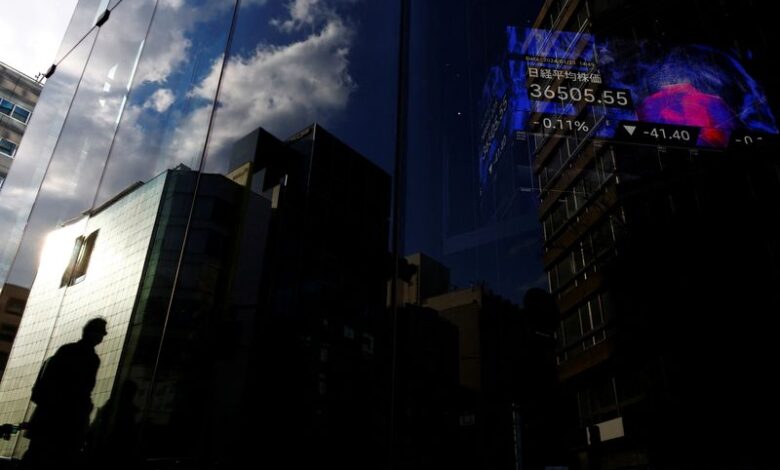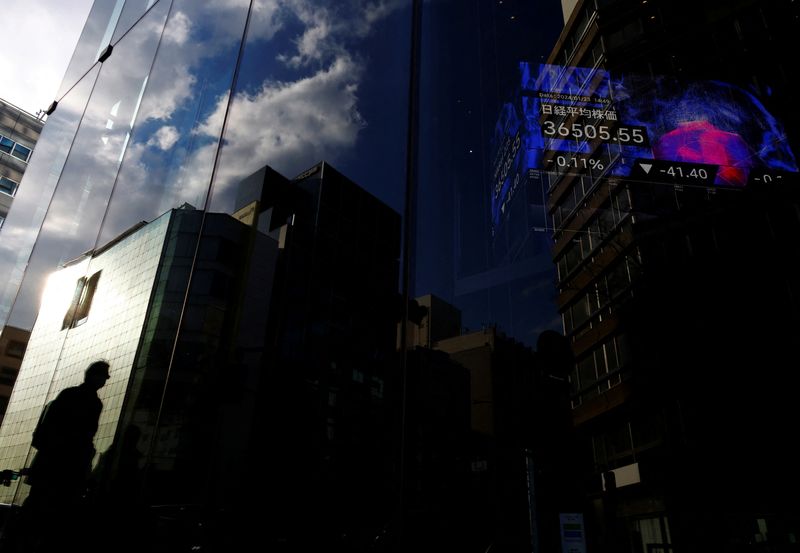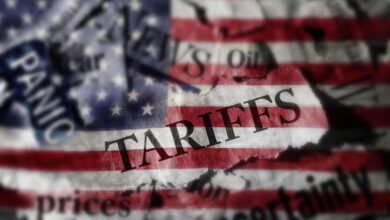Asia shares wobble, traders on guard as Japanese inflation tops forecast


© Reuters. FILE PHOTO: A pedestrian is reflected on a glass of a business building while an electric board showing Nikkei index is seen in the building at a business district in Tokyo, Japan January 23, 2024. REUTERS/Kim Kyung-Hoon/File Photo
By Tom Westbrook
SINGAPORE (Reuters) -Asian shares slipped on Tuesday, with slightly warmer-than-expected Japanese inflation putting investors on guard ahead of price data due in Europe and the U.S. this week, though bitcoin extended gains on signs that institutional buyers are circling.
The yen steadied at 150.50 to the dollar and inched off a three-month low on the euro as Japanese inflation stayed at the central bank’s 2% year-on-year target, keeping alive expectations it would exit negative rates by April.
Tokyo’s eked a fresh record high, but closed just 0.01% firmer. MSCI’s broadest index of Asia-Pacific shares outside Japan dipped 0.2%, keeping below last week’s seven-month peak. ()
futures hovered around $82.63 a barrel after Reuters reported Hamas received a draft Gaza truce proposal including a 40-day pause in fighting.
nudged 0.1% lower while Nasdaq futures, and European futures each fell about 0.2%.
The Federal Reserve’s favoured measure of inflation – the core personal consumption expenditures (PCE) price index – is due on Thursday and forecasts are for a rise of 0.4%.
“If as expected, the core m/m reading would be the highest since last February and fit with the patience message from the Fed,” said analysts at ANZ Bank.
Rate jitters and enormous auctions – $127 billion on Tuesday and another $42 billion on Wednesday – left Treasuries under pressure, though yields steadied in the Asia day. [US/]
Ten-year U.S. Treasury yields were last 1.4 basis points lower at 4.29%. Two-year yields fell 3 bps to 4.71%.
Markets have already pushed out the likely timing of a first Federal Reserve easing from May to June, which is currently priced at around a 70% probability. Futures imply a little more than three quarter-point cuts this year, compared to five at the start of the month.
RBNZ RETREAT
Currency trade was fairly subdued Asia, with recent pressure on the Australian and New Zealand dollars extending. The touched a one-week low of $0.6525, squeezed by a tumble in iron ore prices, before a slight recovery to $0.6547. [AUD/]
The was also at a week-low as traders trimmed wagers that New Zealand’s central bank might even hike interest rates when it meets on Wednesday.
“With 9 bp priced, we see modest NZD weakness on the announcement,” said NatWest Markets currency strategist Antony George.
The euro held steady at $1.0850 and sterling inched down to $1.2676 with speculators trimming bullish bets. rose more than 3% to top $57,000.
Figures on inflation in the European Union are also due this week, on Friday, with the core gauge again seen slowing to the lowest since early 2022 at 2.9% and bringing nearer the day when the European Central Bank (ECB) might ease policy.
Markets are almost fully priced for a first cut in June, with April seen as a 36% chance. In speeches on Monday, ECB President Christine Lagarde and Bank of Greece Governor Yannis Stournaras again pointed to a reticence to rush into cuts
Bank of England deputy Dave Ramsden and Riksbank Governor Erik Thedeen appear later on Tuesday while a smattering of mostly second-tier U.S. and European data are due including consumer confidence for Germany, France and the U.S.



